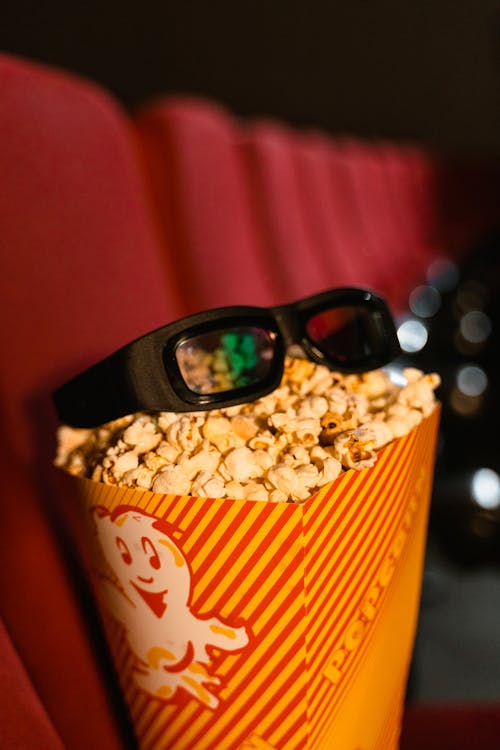🎬Korean Level 3, Activity 9: 영화와 드라마/ Movies and Dramas

photo by Tima Miroshnichenko
Description:
In this activity, students will discuss what movies and dramas they have watched. They will share their favorite movie or drama and give a simple summary of it. Students will learn to describe the plot, characters, and action of a story. Additionally, they will describe preferences and explain the reason behind their preferences.
Semantic Topics:
Drama(드라마), Movie(영화), Favorite(가장 좋아하는), Plot(플롯), Summary(요약), Character(주인공), Story(이야기)
NCSSFL-ACTFL World-Readiness Standards:
- Standard 1.1: Students engage in conversations, provide and obtain information, express feelings and emotions, and exchange opinions.
- Standard 1.2: Students understand and interpret spoken and written Korean on a variety of topics
- Standard 1.3: Students present information, concepts, and ideas in Korean to an audience of listeners or readers on a variety of topics
- Standard 2.1: Students demonstrate an understanding of the relationship between the practices and perspectives of Korean culture.
Idaho State World Language Standards:
- COMM 1.1: Interact and negotiate meaning (spoken, signed, written conversation) to share information, reactions, feelings, and opinions.
- COMM 2.1: Understand, interpret, and analyze what is heard, read, or viewed on a variety of topics.
- COMM 3.1: Present information, concepts, and ideas to inform, explain, persuade, and narrate on a variety of topics using appropriate media in the target language.
- CLTR 1.1: Analyze the cultural practices/patterns of behavior accepted as the societal norm in the target culture.
NCSSFL-ACTFL Can-Do Statements:
- I can identify likes and dislikes.
- I can briefly summarize or retell a story.
- I can give a presentation recommending something I like, such as a movie, television show, famous athlete, celebrity, or historical figure.
- I can compare television show preferences with a peer in the target culture.
1. Begin by introducing the Can-Dos for today’s activity and opening the Google slideshow.
오늘의 학습목표를 소개하고 구글슬라이드를 여세요.
- Today, I will introduce my favorite movie or drama. And I will recommend the movie to other friends.
- 오늘은 자기가 좋아하는 영화나 드라마를 소개해볼 거예요. 그리고 그 영화를 다른 친구에게 추천해 볼 거예요.
2. The students will share which movies they watched recently.
최근에 무슨 영화를 봤는지 이야기해 봅시다.
- What movie did you see recently?
- 최근에 본 영화가 뭔가요?
3. Discuss what kind of manners students have to keep in mind when watching a movie in a movie theater.
영화관에서 영화를 볼 때 어떤 예의를 지켜야 할 지 이야기해 봅시다.
1. Place the questions cards faced down on the table.
질문 카드를 테이블 위에 엎어놓으세요.
2. Each student will pick a card, and the students will read and answer the question. The other students in the lab will also answer the question.
각 학생들은 카드를 하나씩 뽑아서 질문을 읽고 대답하세요. 다른 학생들 또한 질문에 대답하세요.
- “Where do you watch movies often?”
- “I usually go to the movies and watch movies.”
- 영화를 주로 어디서 자주 봐요?
- 저는 주로 영화관에 가서 영화를 봐요.
3. We will repeat this so every student had a chance to pick a question.
모든 학생들이 질문 카드를 뽑을 수 있도록 반복하세요.
4. When all students have finished sharing, then we will discuss similarities and differences of their preferences.
질문이 모두 끝나면 각자 취향의 공통점과 차이점을 이야기해 봅시다.
- “Is your movie taste the same as your friend or is it different?”
- 친구와 영화 취향이 같은가요 ,아니면 다른가요?
5. Discuss similarities and differences between a Korean movie and an American movie.
한국 영화와 미국 영화의 공통점과 차이점을 이야기해 봅시다.
- “What is the difference between Korean and American movies?”
- 한국 영화와 미국 영화는 어떤 점이 다른가요?
Ask the following questions to finish the lab(이 질문으로 랩을 마무리하세요):
- 1. Do you have a movie or drama you want to see?
- 2. Do you have a favorite movie character?
- 1. 보고싶은 영화나 드라마가 있나요?
- 2. 가장 좋아하는 영화 캐릭터가 있나요?
- Read Can-Do statements once more and have students evaluate their confidence.
- (Use thumbs up/thumbs down or download our student cards.)
- Encourage students to be honest in their self-evaluation.
- Pay attention, and try to use feedback for future labs!
NCSSFL-ACTFL Can-Do Statements:
- I can identify likes and dislikes.
- I can briefly summarize or retell a story.
- I can give a presentation recommending something I like, such as a movie, television show, famous athlete, celebrity, or historical figure.
- I can compare television show preferences with a peer in the target culture.


